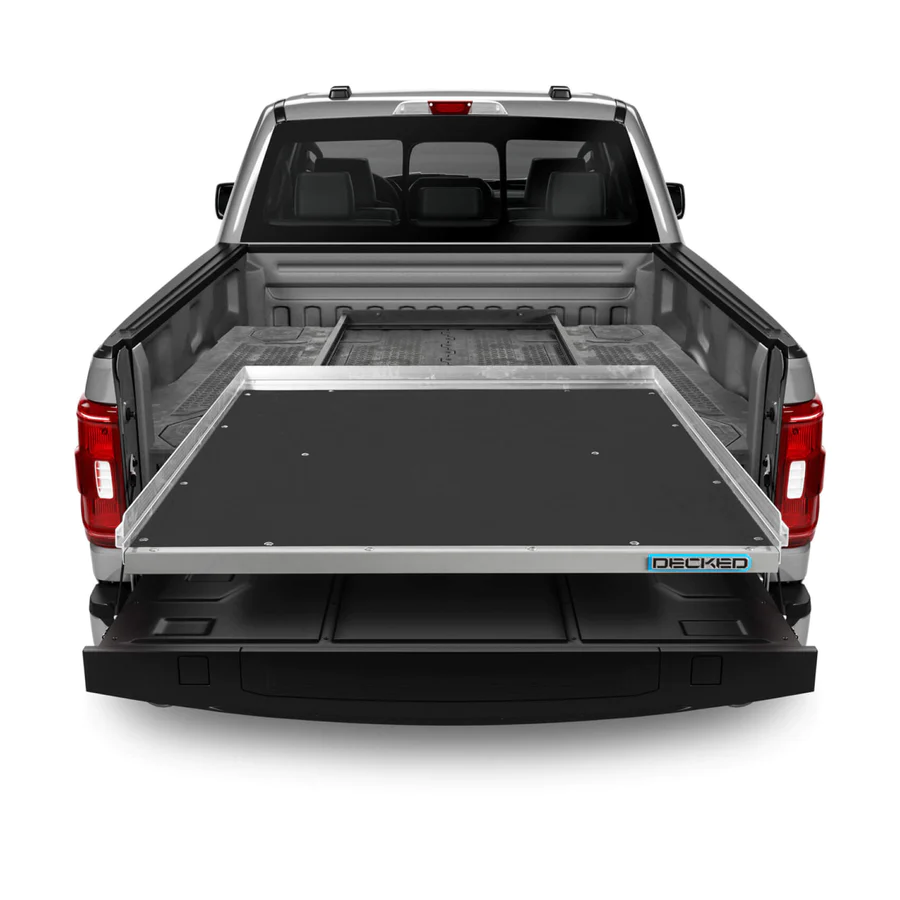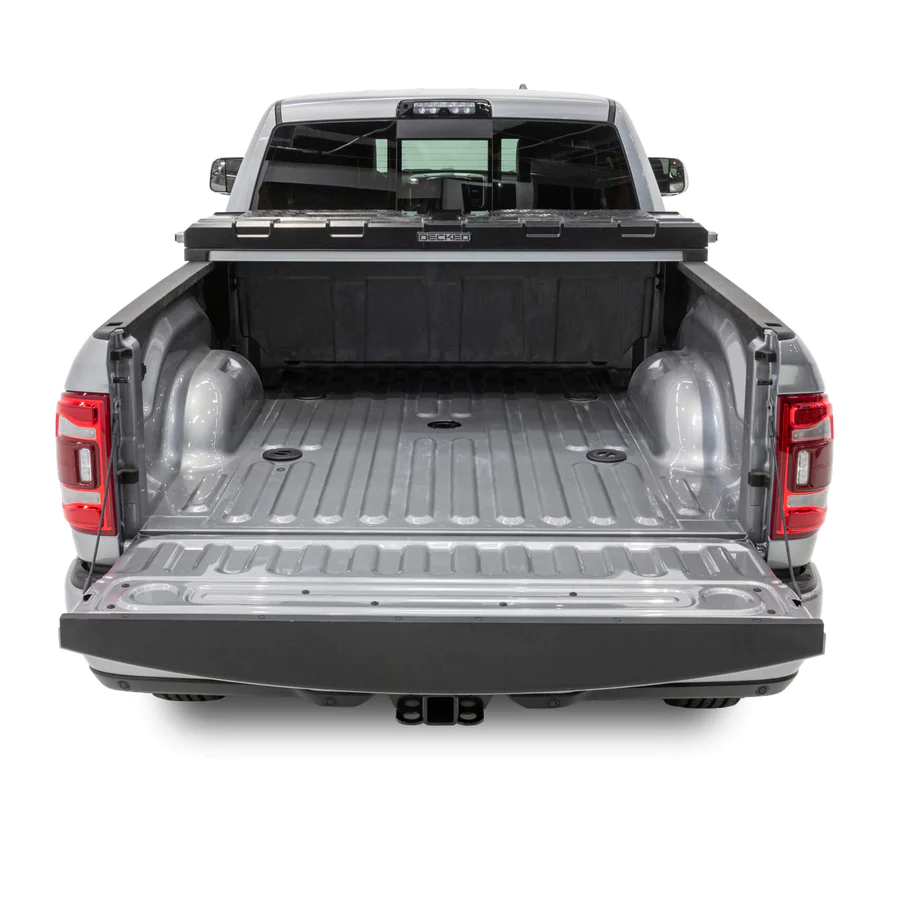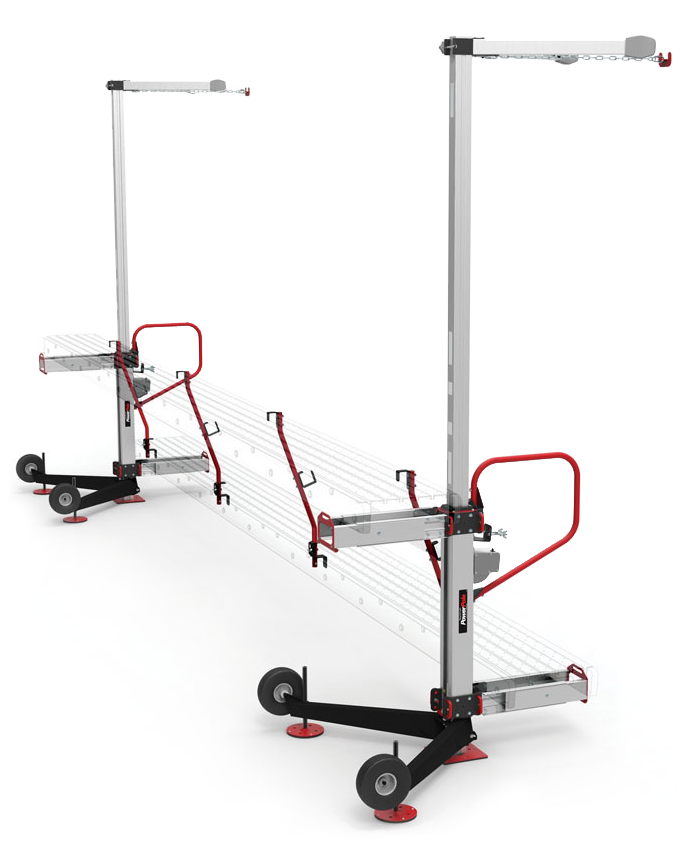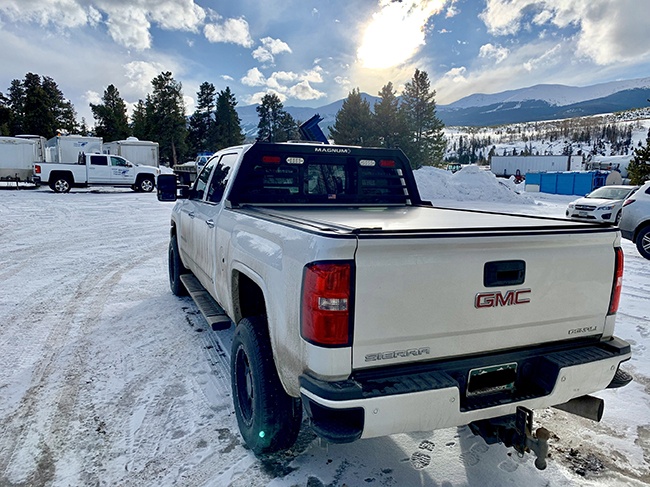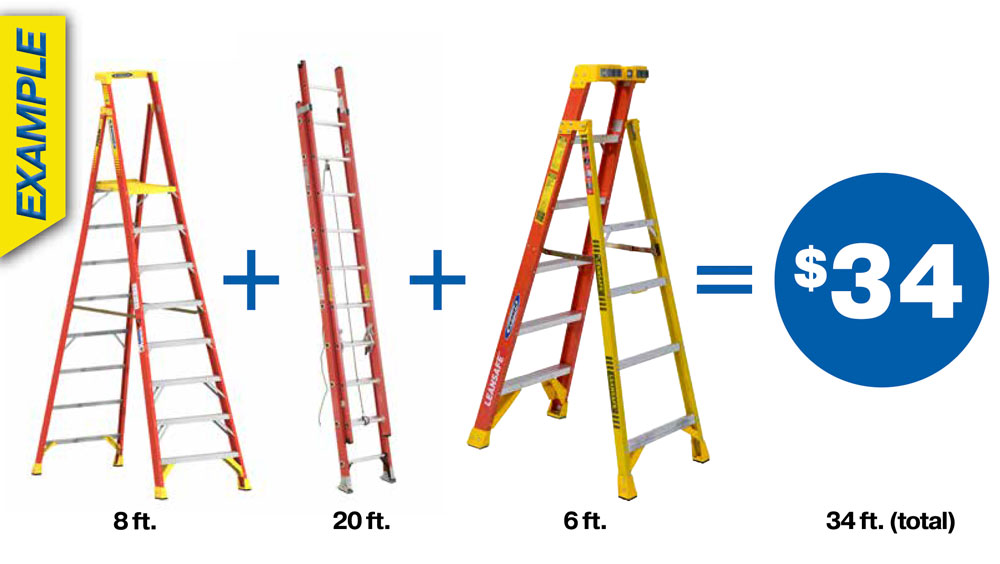Now, more than ever, homeowners are tackling long-forgotten DIY projects. Although this is great, here at Nation Wide Ladder, we’d like to take a moment to provide a few tips concerning fall protection. With the warmer air and being stuck at home, reaching for ladders to cut down branches, climb on the roof, or whatever other adventure awaits should come with extreme caution.
Here are a list of the most commonly asked questions that we hear from homeowners tackling DIY projects.
Using your construction equipment safely to optimize fall protection is vital.
What size ladder do I need to reach 12 feet?
While it may seem that a ladder is one size-fits-all solution, it depends entirely on the user’s height. Generally, 8-foot ladders would be sufficient for the average person to reach up to twelve feet safely. Remember that you don’t want to be standing on the very top rung of ladders. Standing a few rungs from the top is generally the safest. By doing so, you’re creating stability that makes it is easier to balance.
So, while ladders are eight feet in height, you’re only standing on about 6½ to 7 feet up. Always consider these types of logistics when selecting the right height for your task.
Does anyone make a fiberglass extension ladder bigger than 40 feet?
No. If you are looking for ladders that reach above forty-feet, you have a few options for construction equipment. One option many people turn to is power ladders, which can reach up to 44 feet. Another common solution that many utilize is scaffolding.

How high do power ladders reach?
As a general rule, extension ladders reach 44 feet. As we mentioned, scaffolding is another solution for higher projects. If you’re considering scaffolding, be sure to look into the “alum-a-pole.”
How high can I go with an alum-a-pole?
The alum-a-pole can reach up to 50 feet, shoulder high. Alum-a-poles are fantastic options for construction equipment because they are optimal in height and provide superior fall protection features.
In terms of fall protection, what angle should extension ladders rest?
75.5 degrees is the optimal angle to rest ladders. Resting ladders any steeper than 75.5 degrees creates a dangerous situation for the individual climbing the ladder. While some people may get away with resting ladders at a steep angle, the risk is not work the possible outcomes!

One of the most essential steps in fall protection is to fasten ladders securely. In combination with proper ladder height, adequate resting angle, or other equipment, you can be sure that you have the best fall protection available for your project.
For more information on superior fall protection equipment and tips, contact our team at Nation Wide Ladder today (800) 228-2519.
































